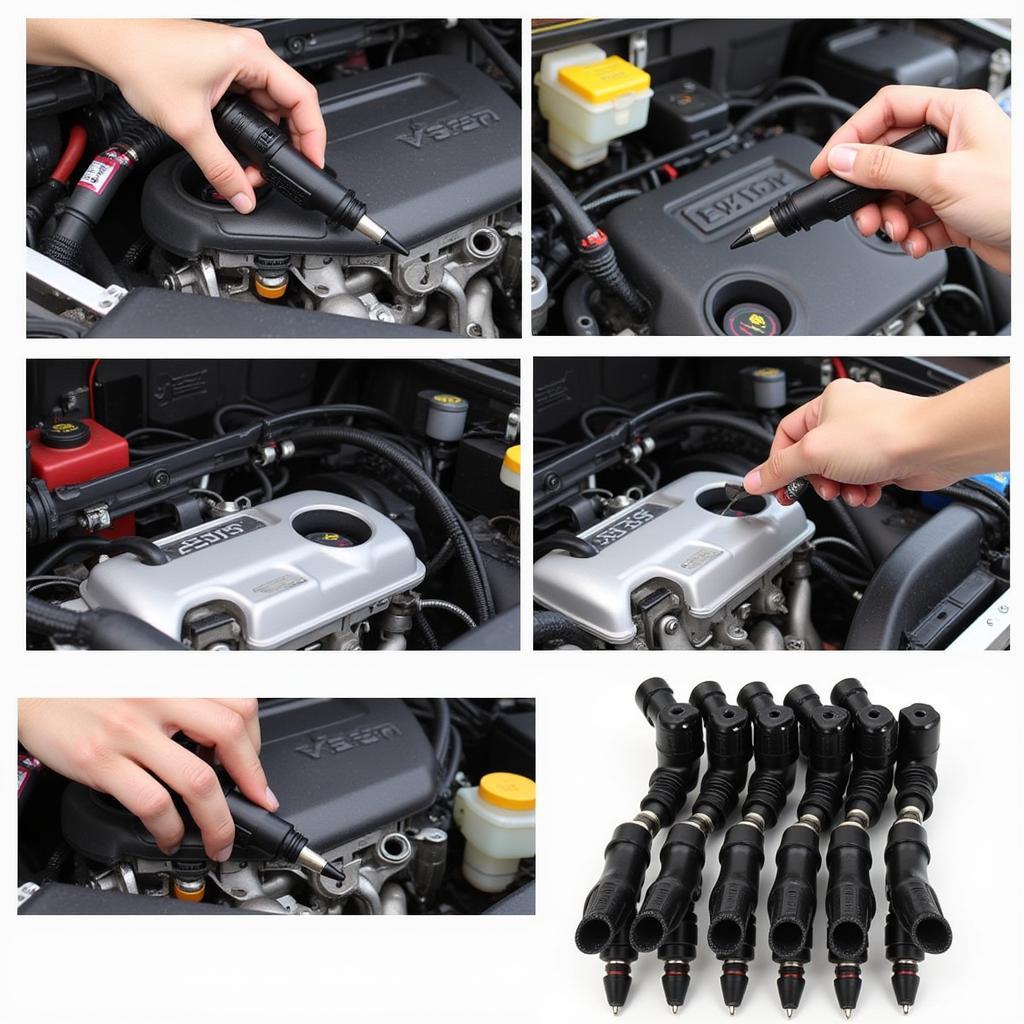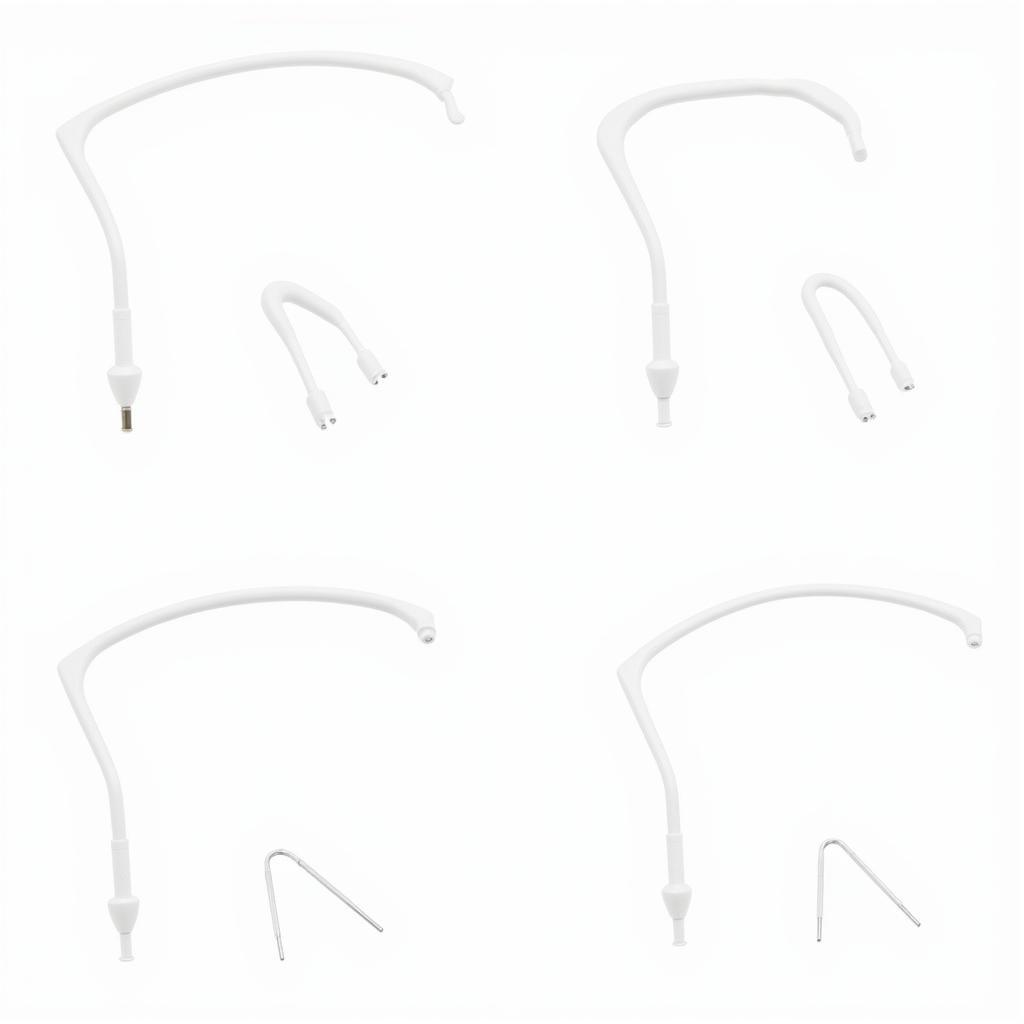A mechanics stethoscope, also known as an automotive engine diagnostic tool, is a crucial instrument for pinpointing the source of troublesome noises within your vehicle’s engine. This invaluable tool allows you to effectively diagnose and resolve engine issues, saving you time and money in the long run. Whether you’re a professional mechanic or a car enthusiast, understanding how to use a mechanics stethoscope can significantly improve your troubleshooting capabilities. Let’s delve deeper into the world of this essential automotive engine diagnostic tool.
After you’ve checked the obvious, such as loose belts or hoses, a mechanic’s stethoscope comes into play. It helps you isolate ticking, knocking, or whirring sounds coming from specific components. You can then pinpoint the problem area much faster than relying solely on your ears. For those interested in expanding their diagnostic toolbox, check out consumer automotive diagnostic tools.
Why Use a Mechanics Stethoscope for Engine Diagnostics?
The power of a mechanics stethoscope lies in its ability to amplify subtle sounds that might otherwise be missed by the naked ear. This amplification makes it easier to identify the origin of unusual noises, allowing for a more precise diagnosis. Imagine trying to locate a tiny leak in a complex network of pipes – a mechanics stethoscope acts like a magnifying glass for sound, guiding you directly to the source of the problem.
This automotive engine diagnostic tool is particularly useful in detecting issues such as worn bearings, faulty valves, and failing fuel injectors. These problems often manifest as faint clicks or taps that are difficult to discern without assistance. By using a mechanics stethoscope, you can quickly identify these subtle warning signs before they escalate into major repairs.
How to Use a Mechanics Stethoscope Effectively
Using a mechanics stethoscope effectively requires a systematic approach. Begin by familiarizing yourself with the various components of the engine and their typical operating sounds. This knowledge will serve as a valuable baseline for comparison when listening for abnormalities. Next, start by placing the probe of the stethoscope against different areas of the engine, listening carefully for any unusual noises. It’s often helpful to start with the most common sources of problems, such as the valves, cylinders, and fuel injectors. As you move the probe, pay attention to changes in sound intensity and frequency. These changes can provide valuable clues about the location and nature of the problem. Looking for car diagnostic tool shop near me? Check out ScanToolUS.
 Using a Mechanics Stethoscope on Various Engine Components
Using a Mechanics Stethoscope on Various Engine Components
What are the Benefits of Using a Mechanics Stethoscope?
- Precision Diagnosis: Pinpoint the exact location of problematic components.
- Cost Savings: Early diagnosis prevents costly repairs down the line.
- Time Efficiency: Quickly identify issues without extensive disassembly.
- Versatility: Useful for diagnosing a wide range of engine problems.
Choosing the Right Mechanics Stethoscope
Selecting the appropriate mechanics stethoscope for your needs is essential. While basic models can be effective for simple diagnostics, more advanced stethoscopes offer features such as amplified listening and multiple probe attachments. These features can be particularly helpful for diagnosing complex engine problems or working in noisy environments. Consider the types of vehicles you typically work on and the level of detail you require when making your selection. Here’s a resource for truck diagnostic tools super ear.
 Different Types of Mechanics Stethoscopes for Automotive Diagnostics
Different Types of Mechanics Stethoscopes for Automotive Diagnostics
What Features Should I Look For?
- High-Quality Construction: Ensure durability and longevity.
- Comfortable Grip: Allows for extended use without fatigue.
- Sensitive Probe: Captures even the faintest noises.
- Amplified Listening (Optional): Enhances sound clarity.
Conclusion
The mechanics stethoscope is an indispensable automotive engine diagnostic tool for anyone involved in vehicle maintenance and repair. Its ability to pinpoint the source of engine noises quickly and accurately allows for effective troubleshooting and prevents costly repairs down the line. By understanding how to use a mechanics stethoscope effectively and choosing the right tool for your needs, you can significantly enhance your diagnostic capabilities. Need help finding windows 7 home 64 diagnostic tools? Contact us at ScanToolUS, located at 1615 S Laramie Ave, Cicero, IL 60804, USA or call us at +1 (641) 206-8880. We’re here to help you keep your engines running smoothly.
 Mechanic Using a Mechanics Stethoscope on a Car Engine
Mechanic Using a Mechanics Stethoscope on a Car Engine
Are you looking for sensor diagnostic tool windows 7? Explore more options at ScanToolUS.

